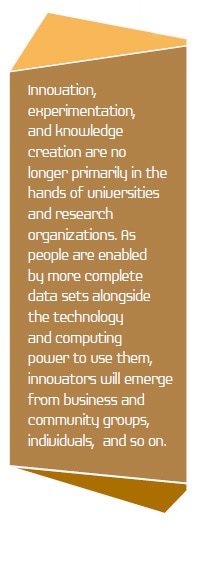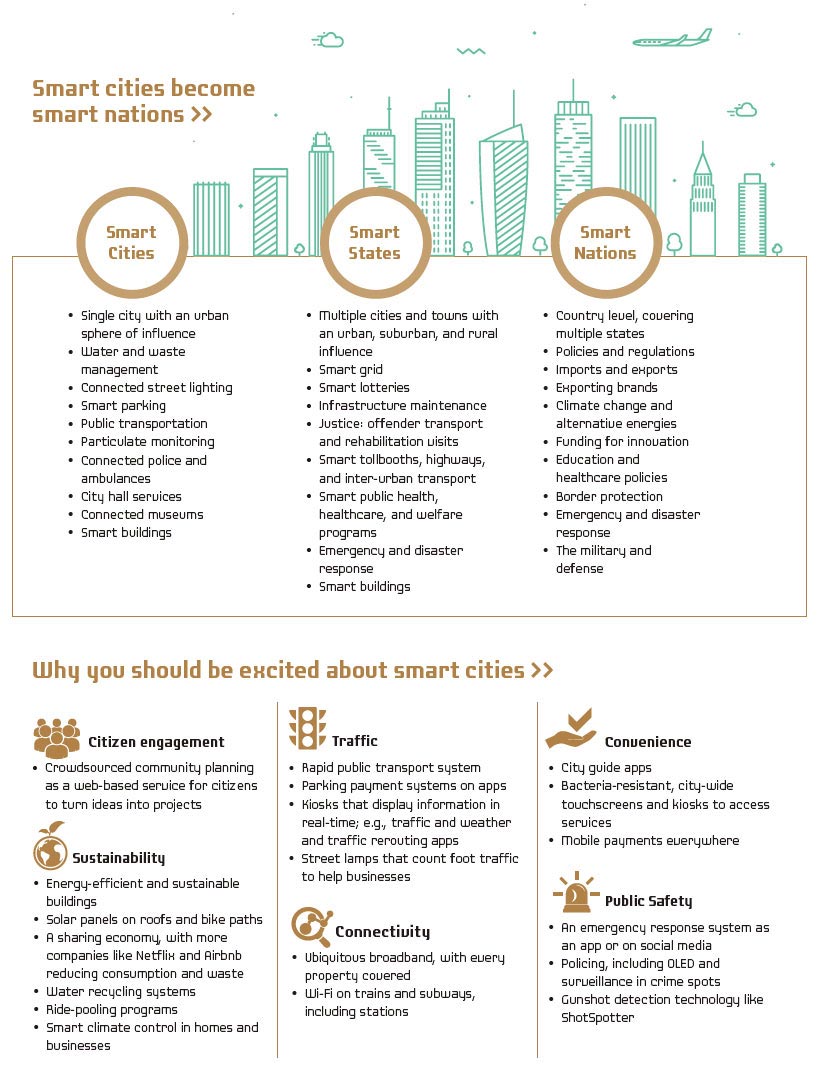Smart cities in the city century
ICT enablers and AI will make cities safter and smarter than ever before. But, there are a number of steps that need to be taken before we can reach that stage.


By Gerald Wang, Head of Government & Education, IDC Government Insights

Urbanization is on the rise
The 21st century is the century of cities, with the urban population predicted to grow from 54 percent of the global population in 2014 to 66 percent in 2050. Cities already generate over 70 percent of an average country’s GDP, more than 70 percent of energy consumption, and over 50 percent of global greenhouse gas emissions.
Worldwide demographic and technological trends are driving the need for cities to rethink how they use ICT, existing infrastructure, and core resources like government workers, citizens, and community and business groups.
A question of money
Many cities in both developed and developing countries face financial challenges that are exacerbated by current financial uncertainty and global austerity. In many countries, the aging workforce is felt more heavily in government, where a higher percentage of workers are nearing retirement age.
City leaders must do more with less and look at problems in new and innovative ways to achieve change and digital transformation, both of which are necessary. They can then move seamlessly into the stage Augmented Innovation and the era of smart cities and digital economies can truly begin.
A question of technology
As the next cycle of e-government innovation, the key objectives of smart cities are to improve economic development, sustainability, innovation, and citizen engagement. Progress requires building an ecosystem of partners to improve the quality of life for residents.
Smart city projects, including citizen engagement, depend on the major technology enablers of Augmented Innovation: broadband, data centers, big data analytics, cloud, and the Internet of Things (IoT). Other crucial technologies in the smart city mix are AI and cognitive systems, robotics, 3D printing, next-gen security, augmented and virtual reality, and social networks.
AI, in particular, will form the cornerstone of smart cities, a fact that telcos are waking up to. Currently, smart city data collected from sensors is done so vertically and, according to Deutsche Telekom board member Claudia Nemat, is confined to a “landlocked lake.” She believes that, “The content of such data ‘oceans’ will be so massive, and the relevant analysis so complex, that only artificial intelligence will be able to carry out the relevant data processing and forwarding with the necessary accuracy and speed.”

Technological progress will underpin the shift from second platform technologies to third platform technologies. Second platform tech focuses on cost cutting, sustainability, outsourcing, citizen engagement, and performance and risk management. Third platform tech centers on economic development; sustainability, resilience, and climate preparedness; partnerships and ecosystems; civic tech; open data, transparency, and accountability; and innovation management.
Roadblocks to smart cities
All cities focus on driving economic development, foreign investment, and job creation. But, challenges exist in various areas:
Technology infrastructure: includes fragmented, aging, outdated, or undeveloped infrastructures; information and process siloes; and bureaucratic and cultural issues.
Data use: involves a lack of data interoperability standards within and across domains and a lack of policies or guidelines defining how to securely exploit the value of data in a multi-stakeholder environment.
City infrastructure: includes traffic, crime, and poor waste and energy resource management.
Development path: refers to the complex goal of achieving growth in a way that keeps pace with technology and the changing expectations of citizens and businesses.
Threats: includes factors like financial, organizational, civil unrest, cyber security, and public safety.
Most cities don’t look for a single silver bullet, and instead aim for shared goals and close partnerships between stakeholders, which tend to include government organizations, tech and domain suppliers, manufacturers, planners and developers, academia, NGOs, energy providers, users, and community groups.
Citizen engagement
Large-scale transformation requires experimentation, collaboration, and new ideas that iteratively build upon successes and failures over time. One way is to engage citizen groups, business leaders, and IT vendors in IT organizations, city administration, and innovation.
People have high expectations. They want 24/7 access to services through any channel — in person, by mobile device, or computer. They want these services with some level of personalization, or at least preference recognition, and consistent interaction.
This influences mobile strategies in how cities interact with citizens, how services can be delivered, and how ICT works to support government departments and citizens. A strong digital infrastructure must exist alongside ways to engage citizens and business communities in designing the services they want to use. A key feature of the Augmented Innovation stage is that people will have the ICT tools to do this.
Cities can use open data and transparency initiatives to drive more private, citizen, or crowdsourced mobile apps for government services than cities, and this is a trend we expect to see.
By making high-value data and content openly available through web application programming interfaces (APIs) and websites, cities make it easier for departments to share key data internally and with other agencies. Additionally, developers can build applications around city data, which the public can find, use, and visualize on user-friendly charts, graphs, and maps.
The key steps for using open data strategically are choosing data sets to open up based on their impact and usability; providing a platform on which developers can build; balancing improved access to local government information against security and privacy issues based on the types of APIs used; and promoting the use of data via hackathons, ideas, challenges, and other means.
Looking ahead to Augmented Innovation

Innovation, experimentation, and knowledge creation are no longer primarily in the hands of universities and research organizations. As people are enabled by more complete data sets alongside the technology and computing power to use them, innovators will emerge from business and community groups, individuals, government agencies, philanthropic organizations, and other nonprofits and private companies that serve government clients. The challenge is how to promote and harness the ideas from those inside and outside of government.
Innovating to improve services for citizens and operate more efficiently is invariably the foundation of smart city projects and is often accompanied by an expectation of lower costs.
However, there are other benefits that innovation inspires: one, harnessing the collective wisdom of citizens and, two, attracting and retaining younger government workers.
Innovation requires the ability to experiment and collaborate, which means policy makers must be willing to try new things and take risks, potentially expose themselves to failure, and use an iterative process built upon successes and failures over time.
Notably, more mayors and CIOs with vision are getting the attention of constituents, other cities, and the media via high-profile projects with vendors, heavy involvement in the smart cities movement, and personal interaction with citizens via social media. As other key players watch their success, more are becoming open to using emerging technologies and fostering new relationships with citizens and stakeholders.
The big six
We’ve identified six key ways for how cities can promote innovation, increase citizen sourcing and digital participation, and improve service delivery through IT:
- Defining new leadership roles where the CIO serves as chief innovation officer (CVO).
- Formalizing innovation as a citywide function using civic innovation organizations.
- Developing an innovation ecosystem to involve the larger urban community.
- Using open data and transparency as a citizen engagement and sourcing strategy.
- Using next-gen, cross-functional, cross-agency systems as platforms for transforming operations and performance.
- Developing new contract and vendor relationship models that allow everyone to benefit.
When enabled by a strong technological and digital infrastructure alongside open data and citizen engagement channels, anyone can become an innovator in nations that enter the Augmented Innovation stage. Then, we can realize smart cities, smart states, and smart nations in a truly connected world.




